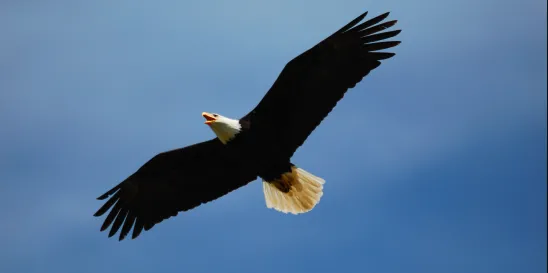On February 12, 2024, the United States Fish and Wildlife Service (FWS) published a final rule that created several long-awaited general permits under the Bald and Golden Eagle Protection Act (Eagle Act) to authorize incidental take of eagles associated with the operation of wind farms, power lines, and other activities. The new general permits are effective beginning April 12, 2024, and provide an expedited permitting process and standardized permit conditions for projects that pose a low risk of eagle take.
Key Takeaways
- Under the new general permitting system, eligible wind projects and power lines posing a low risk of eagle take can obtain immediate coverage for incidental take of eagles by registering with FWS.
- While projects posing an increased or uncertain risk of eagle take are ineligible for general permit coverage and still require authorization under an individual Eagle Act permit, the rulemaking includes revised regulations aimed at improving the individual permitting process.
Analysis
FWS’s new general permits cover incidental take from four types of activities: (1) wind energy projects; (2) power line infrastructure; (3) certain types of bald eagle nest take; and (4) certain types of disturbance. Applicants who certify that their respective projects and activities meet the prescribed eligibility criteria for the permits will automatically receive coverage for incidental take from FWS if the applicant also certifies that it will comply with prescribed avoidance, minimization, monitoring, and reporting requirements for each covered activity.
Onshore Wind Energy Projects within the Lower 48 States
First-time applicants are eligible for the general permit if all of the turbines are located in an area that is below eagle population abundance thresholds outlined in the regulations and all turbines are located at least 2 miles from a golden eagle nest and at least 660 feet from a bald eagle nest. Renewal applicants remain eligible as long as they comply with all of the permit requirements, even if the abundance thresholds have changed or eagles have constructed nests within the buffer distances.
Wind projects must specifically develop and implement an adaptive management plan; avoid creating features that encourage roosting or nesting behaviors; and minimize collision and electrocution risks. Operators must conduct monitoring for injured eagles and eagle remains. If three eagles of any one species are found injured or deceased during a permit term, the operator must implement adaptive management measures. If four eagles of any one species are found during a permit term, the wind farm will not be eligible for future general permits. Wind farms must complete compensatory mitigation by obtaining credits based on the project size. General permits for wind farms have a five-year tenure.
Power Lines
All power lines are eligible for general permit coverage, but applicants must develop one of the following types of plans as a condition of the general permit:
- Reactive retrofit strategy. A plan to retrofit poles following the discovery of an electrocuted eagle.
- Proactive retrofit strategy. A plan to convert existing infrastructure to avian-safe within a set timeframe.
- Collision response strategy. A plan to identify collision-caused mortality, evaluate the factors contributing to the collision, and implement risk reduction measures.
- Shooting response strategy. A plan for when eagles are found killed near the power line infrastructure to determine if shooting is suspected and communicate with law enforcement.
All new construction of power infrastructure must typically be avian-safe and be sited and designed to minimize risk to eagles. Compensatory mitigation may be required if the general permit conditions cannot be met. Power line general permits are valid for five years.
Disturbance and Nest Take
The following activities may be eligible for a general permit for disturbance of eagles depending on the activity’s distance to eagle nests: building construction; linear infrastructure construction and maintenance; alteration of shorelines and water bodies; alteration of vegetation; motorized recreation; nonmotorized recreation; aircraft operation; prescribed burn operations; and loud, intermittent noises. Permittees must take measures to minimize nest disturbance and monitor nests. General permits for disturbance are valid for up to one year.
General permits are also available for bald eagle nest take for emergency, health and safety, and removal from human structures purposes (other purposes are allowed for nests located in Alaska). Nest take general permits are valid for up to one year.
Specific Permits
Specific permits remain available for projects that are either not eligible for a general permit or prefer individualized permit terms. FWS’s regulations update the process and requirements for specific permits, including the applicable fees.
Next Steps
The rule will take effect on April 12, 2024. The introduction of general permits under the Eagle Act is certain to increase the number of projects that seek permit coverage. The final rule estimates that more than 80% of existing land-based wind turbines in the lower 48 states may be eligible for coverage under a general permit. Wind farm and power line operators should evaluate their eligibility for coverage under the new general permits.







 />i
/>i

